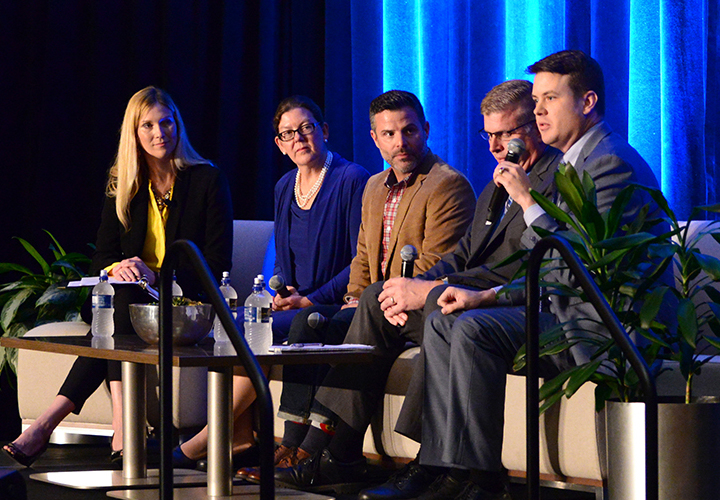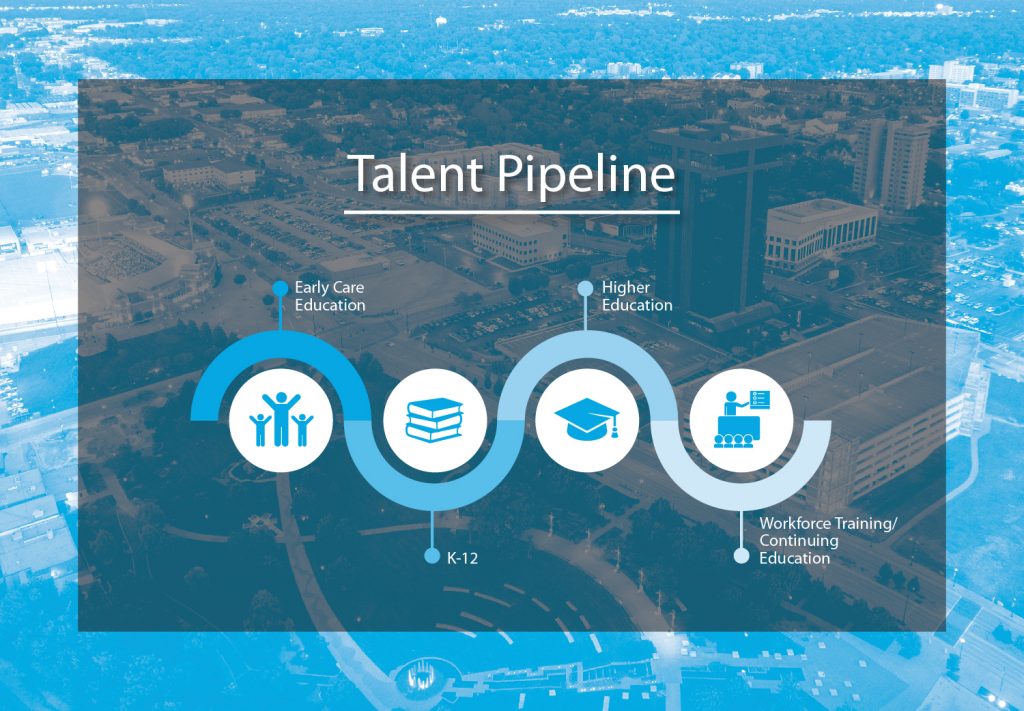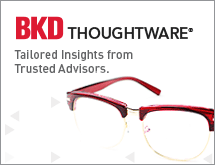Education leaders discuss innovation, workforce preparedness

The third event in the Springfield Business Development Corporation’s Outlook series focused on education and featured four panelists offering their insights on innovation in a rapidly changing world.
Before the panelists took the stage, Chamber Vice President of Workforce Development Lindsay Haymes provided an overview of the Chamber and SBDC’s efforts to attract, retain and develop skilled workers to meet the demands of a growing economy. One of our significant workforce development efforts is the Talent Attraction Initiative, which includes a series of videos designed to showcase the region’s quality of life. During the event, the Chamber debuted its newest TAI video focused on families and education resources, which will be housed at LiveInSpringfieldMo.com with all our other relocation resources. (Scroll down to the bottom of this story to see the video!)
Haymes also discussed the impetus behind the Chamber’s involvement in education efforts: talent’s role as the critical component for helping existing businesses grow and attracting new businesses to our area.
 “Across the board, what we hear from businesses already in Springfield and those that would like to do business here is that their No. 1 concern today is talent,” she said, noting the Chamber’s efforts to work with education institutions to fill the talent pipeline. “They need to hire people now, and they need to be sure the talent pipeline is filled with a robust set of skilled and prepared individuals who can meet their growing business needs 2, 5 and 10 years from now.”
“Across the board, what we hear from businesses already in Springfield and those that would like to do business here is that their No. 1 concern today is talent,” she said, noting the Chamber’s efforts to work with education institutions to fill the talent pipeline. “They need to hire people now, and they need to be sure the talent pipeline is filled with a robust set of skilled and prepared individuals who can meet their growing business needs 2, 5 and 10 years from now.”
Attendees then heard from four local education leaders: Dr. Curtis Chesick, executive director of communications/technology for Ozark Public Schools; Dr. Ben Hackenwerth, executive director of innovation and information with Springfield Public Schools; Dr. Tammy Jahnke, dean of Missouri State University’s College of Natural and Applied Sciences; and Matthew Simpson, director of research, strategic planning and grant development for Ozarks Technical Community College.
The panelists focused on the ways their organizations are trying to innovate the educational experience. From programs like GO CAPS, designed to take students out of the traditional classroom and expose them to new career opportunities, to Ozark’s Project Lead the Way, focusing on exposing young children to the intricacies of computer coding, schools are looking for new ways to engage students.
And higher education institutions are innovating as well – often by collaborating with each other to best serve students and the community, such as Missouri State’s partnerships with UMKC and Missouri S&T or OTC’s move away from traditional standardized testing and toward a self-guided process to place incoming students.
“Collaboration is a way of life; it’s not just a buzzword,” Simpson said when describing how local colleges and universities work together.
The panelists then looked at what the future might hold for educators. All four noted the need to better train students on “soft skills” like communication, teamwork and critical thinking – all of which have also been cited as key needs by businesses looking for skilled workers.
“Those soft skills are so important in all disciplines that we’ve been working to integrate that into all parts of the curriculum,” Jahnke said, adding that the university often brings in business leaders and recent graduates to reinforce the importance of those soft skills after graduation.
In the end, all four panelists were in agreement that their key priority is making sure students are as prepared as possible for success – whether that means having the technical skills that come from a program like Ozark’s construction trade class for high schoolers that offers OSHA certification, or as Dr. Hackenworth put it, making sure students are “exposed to as many career choices and opportunities as possible, so they know what options are available.”
And the key to keeping up with those changing and growing demands: willingness to innovate. “We always have to ask ourselves,” Chesick said, “are we doing better today than yesterday?”

